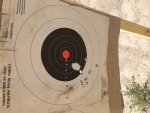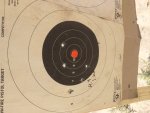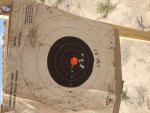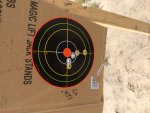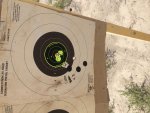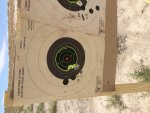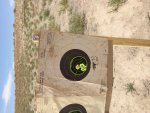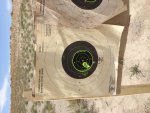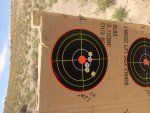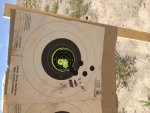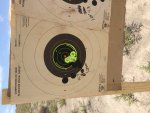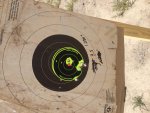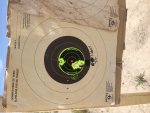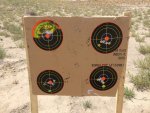Cases Where Handloads Caused Problems in Court
As promised, here are the sources for records for any who feel a need to confirm the cases I have referenced previously where handloaded ammunition caused problems for people in the aftermath of shootings.
As I have noted in this thread earlier, and as the attorneys who have responded to this matter have confirmed, local trials and results are not usually available on-line. However, in each case, I have included the location where the physical records of the trials are archived.
NH v. Kennedy
James Kennedy, a sergeant on the Hampton, NH police force, pursued a drunk driver whose reckless operation of the vehicle had forced other motorists off the road. The suspect ended up in a ditch, stalled and trying to get underway again. Advised by radio that responding backup officers were still a distance away, and fearing that the man would get back on the road and kill himself and others, Kennedy approached the vehicle. At the driver’s door, the suspect grabbed Kennedy’s Colt .45 auto and pulled it towards himself. It discharged in his face, causing massive injury.
The reload in the gun was a 200 grain Speer JHP, loaded to duplicate the 1000 fps from a 5” barrel then advertised by Speer for the same bullet in loaded cartridge configuration.
This was the first case where I saw the argument, “Why wasn’t regular ammunition deadly enough for you,” used by opposing counsel. They charged Kennedy with aggravated assault. They made a large issue out of his use of handloads, suggesting that they were indicative of a reckless man obsessed with causing maximum damage.
Defense counsel hired the expert I suggested, Jim Cirillo, who did a splendid job of demolishing that argument and other bogus arguments against Kennedy at trial, and Kennedy was acquitted.
This case dates back to the late 1970s. The local courts tell me that the case documentation will be on file at Rockingham County Superior Court, PO Box 1258, Kingston, NH 03843. File search time is billed at $25 per hour for cases such as this that date back prior to 1988.
NJ V. Bias
This is the classic case of gunshot residue (GSR) evidence being complicated by the use of handloaded ammunition, resulting in a case being misinterpreted in a tragic and unjust way. On the night of 2/26/89, Danny Bias entered the master bedroom of his home to find his wife Lise holding the family home defense revolver, a 6” S&W 686, to her head. He told police that knowing that she had a history of suicidal ideation, he attempted to grab the gun, which discharged, killing her. The gun was loaded with four handloaded lead SWC cartridges headstamped Federal .38 Special +P.
Autopsy showed no GSR. The medical examiner determined that Lise Bias had a reach of 30”, and the NJSP Crime Lab in Trenton determined that the gun in question would deposit GSR to a distance of 50” or more with either factory Federal 158 grain SWC +P .38 Special, or handloads taken from his home under warrant for testing after Danny told them about the reloads. However, the reloads that were taken and tested had Remington-Peters headstamps on the casings and were obviously not from the same batch.
Danny had loaded 50 rounds into the Federal cases of 2.3, 2.6, and 2.9 grains of Bullseye, with Winchester primers, under an unusually light 115 grain SWC that he had cast himself, seeking a very light load that his recoil sensitive wife could handle. The gun had been loaded at random from that box of 50 and there was no way of knowing which of the three recipes was in the chamber from which the fatal bullet was launched.
We duplicated that load, and determined that with all of them and particularly the 2.3 grain load, GSR distribution was so light that it could not be reliably gathered or recovered, from distances as short as 24”. Unfortunately, the remaining rounds in the gun could not be disassembled for testing as they were the property of the court, and there is no forensic artifact that can determine the exact powder charge that was fired from a given spent cartridge.
According to an attorney who represented him later, police originally believed the death to be a suicide. However, the forensic evidence testing indicated that was not possible, and it was listed as suspicious death. Based largely on the GSR evidence, as they perceived it, the Warren County prosecutor’s office presented the case to the grand jury, which indicted Danny Bias for Murder in the First Degree in the death of his wife.
Attorney John Lanza represented Danny very effectively at his first trial, which ended in a hung jury. Legal fees exceeded $100,000, bankrupting Danny; Attorney Lanza, who believed then and now in his client’s innocence, swallowed some $90,000 worth of legal work for which he was never paid.
For his second trial, Bias was assigned attorney Elisabeth Smith by the Public Defender’s office. Challenging the quality of evidence collection, she was able to weaken the prosecution’s allegation that the GSR factor equaled murder, but because the GSR issue was so muddled by the handloaded ammo factor, she could not present concrete evidence that the circumstances were consistent with suicide, and the second trial ended with a hung jury in 1992. At this point, the prosecution having twice failed to convince a jury beyond a reasonable doubt, the judge threw out the murder charge.
It was after this that I personally lost track of the case. However, I’ve learned this past week that the case of NJ v. Daniel Bias was tried a third time in the mid-1990s, resulting in his being acquitted of Aggravated Manslaughter but convicted of Reckless Manslaughter. The appellate division of the Public Defender’s office handled his post-conviction relief and won him a fourth trial. The fourth trial, more than a decade after the shooting, ended with Danny Bias again convicted of Reckless Manslaughter. By now, the state had changed its theory and was suggesting that Danny had pointed the gun at her head to frighten her, thinking one of the two empty chambers would come up under the firing pin, but instead discharging the gun. Danny Bias was sentenced to six years in the penitentiary, and served three before being paroled. He remains a convicted felon who cannot own a firearm.
It is interesting to hear the advice of the attorneys who actually tried this case. John Lanza wrote, “When a hand load is used in an incident which becomes the subject of a civil or criminal trial, the duplication of that hand load poses a significant problem for both the plaintiff or the prosecutor and the defendant. Once used, there is no way, with certainty, to determine the amount of powder or propellant used for that load. This becomes significant when forensic testing is used in an effort to duplicate the shot and the resulting evidence on the victim or target.”
He adds, “With the commercial load, one would be in a better position to argue the uniformity between the loads used for testing and the subject load. With a hand load, you have no such uniformity. Also, the prosecution may utilize either standard loads or a different hand load in its testing. The result would be distorted and could be prejudicial to the defendant. Whether or not the judge would allow such a scientific test to be used at trial, is another issue, which, if allowed, would be devastating for the defense. From a strictly forensic standpoint, I would not recommend the use of hand loads because of the inherent lack of uniformity and the risk of unreliable test results. Once the jury hears the proof of an otherwise unreliable test, it can be very difficult to ‘unring the bell.’”
Ms. Smith had this to say, after defending Danny Bias through his last three trials. I asked her, “Is it safe to say that factory ammunition, with consistently replicable gunshot residue characteristics, (would) have proven that the gun was within reach of Lise’s head in her own hand, and kept the case from escalating as it did?”
She replied, “You’re certainly right about that. Gunshot residue was absolutely the focus of the first trial. The prosecution kept going back to the statement, “It couldn’t have happened the way he said it did’.”


